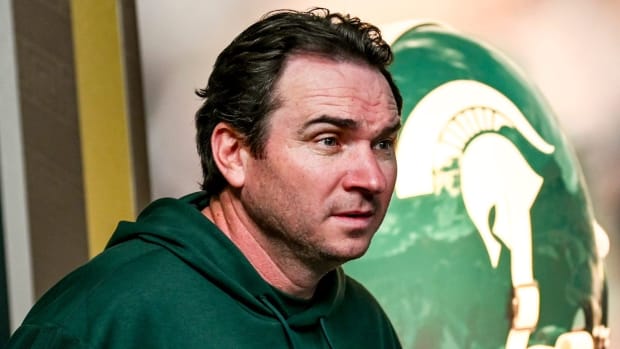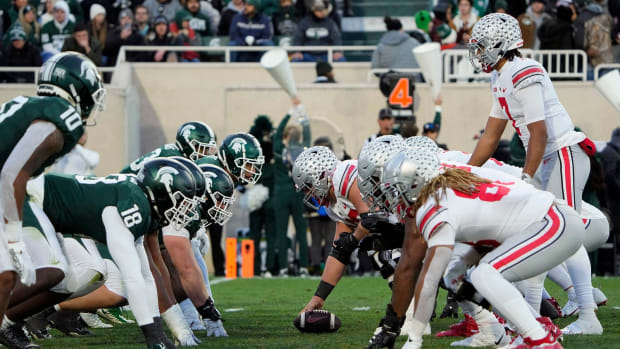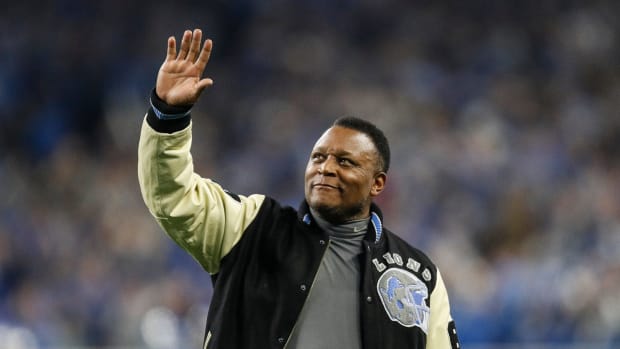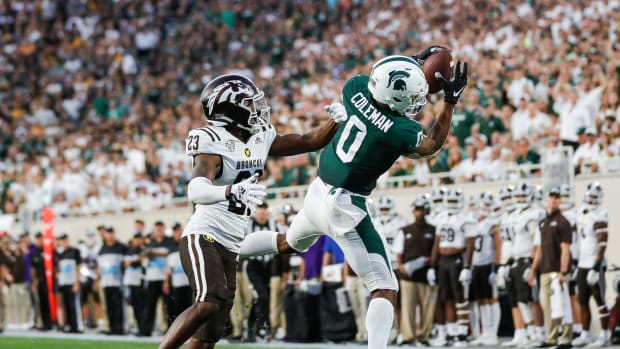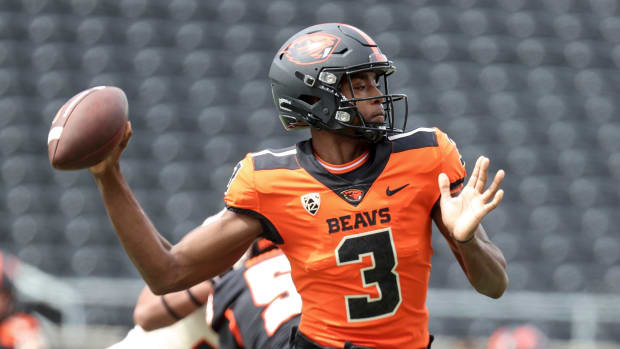Where Is Michigan State Football As September Comes to a Close? Here is the Scope of the Spartans!
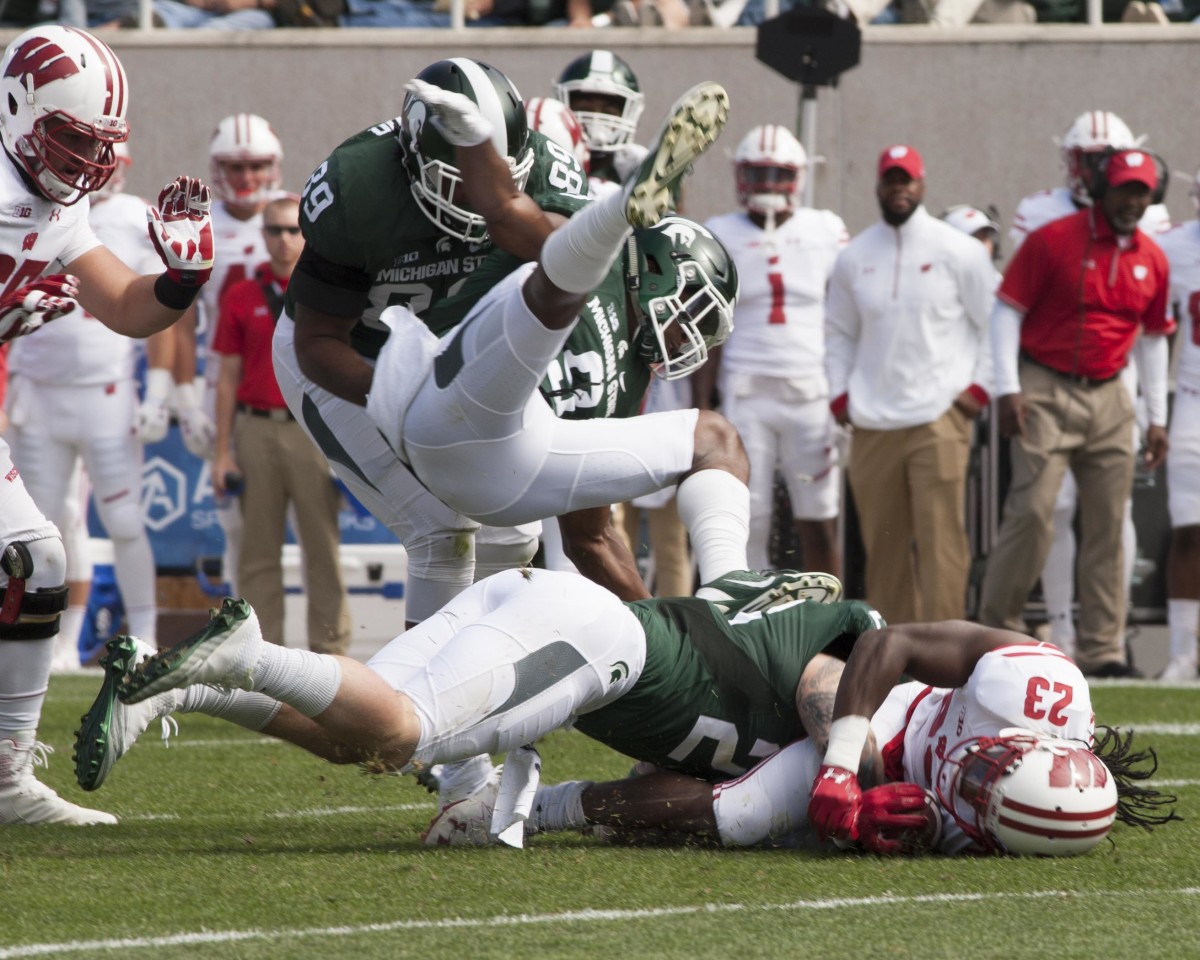
Scope of the Spartans
What a strange September for Spartan Football. After an unimpressive win over Furman in the opener, MSU took advantage of the earliest bye week in memory by turning it on at Notre Dame to get ahead 36-7 late in the 3rd Quarter. The Spartans suddenly turned conservative, however, and the Irish nearly turned that game upside down into a comeback for the ages. The Spartans decision to pull up before they were up at least five scores (33 points) was risky. Fortunately, MSU had enough to get out of South Bend with the huge victory. That set them up nicely for the first of nine conference games, the home opener against Wisconsin, who featured a new Quarterback.
As good as that scenario looked on paper for MSU, it looked bad on the field from the get go. Wisconsin was more prepared, executed early to build momentum, and made game changing plays when they had the opportunity to close the Spartans out by a wide margin. The Badgers looked brilliant by designing a number of crossing routes that got their passing game going early, which boosted their young Quarterback’s confidence level by the snap. It was probably the Badgers best overall effort under Paul Chryst.
MSU played into the Badgers’ paws on the other side of the ball by running the ball right at Wisconsin in a predictable fashion, and not running much of the option with Tyler O’Connor. That approach forced O’Connor into more obvious passing downs where the Badgers geared up and clearly had an edge. If that wasn’t enough, the Spartans poor Special Teams play from 2015 carried over in the form of a kickoff hooked badly out of bounds, flags tossed at Spartans on kicking plays, and of course the fumbled punt snap deep in MSU territory that essentially iced the game for Wisconsin. In short, some of the underlying issues that had been building within Spartan Football for about a year finally caught up to them in a Big Ten game.
September 24, 2016, will go down as another crossroads during the Mark Dantonio era. Not because MSU lost 30-6 at home to a less talented Big Ten team, but because of how the Spartans played. Wisconsin had MSU’s offensive strategy figured out in a flash, and was not pressed to react to any significant in-game adjustments. It wasn’t as simple as execution, the popular word we hear coaches speak all the time. It was a culmination of a redundant offensive approach that has not worked that well for a while now and a failure to correct the persistent Special Teams issues that first appeared in the season opener of 2015.
Without question, Mark Dantonio and staff knew they had some deep thinking to do in the hours after the Wisconsin face plant. Tragically, the news got far worse the day after when Spartan Football learned that Mylan Hicks was murdered in Canada. That event has sent this season into unchartered waters as the program now mourns a second loss of a recent graduate. Grief is naturally hard to quantify, and when multiplied by the dozens in a highly concentrated-team environment, who knows what the outcome will be? At this point no one can predict how Spartan Football will process the loss of both Mike Sadler and Mylan Hicks during the fall, and how their performance on the field might be impacted.
The Spartans offensive strategy versus Wisconsin made things easier for the Badgers’ defense as the game went on. That’s a very serious concern moving forward. MSU came out “run-first stubborn” and the Badgers wisely used that against MSU, and put them on their heels. The Spartans finished with 75 yards rushing on 27 carries. MSU took a similar approach against Iowa last year and got away with it thanks to a late option or two, and one all-time reach for victory. To many observers it appeared that MSU got in its own way offensively against Iowa, making that game far closer than it ever should’ve been. Stanford’s 45-16 Rose Bowl thumping of the Hawkeyes tended to support that notion.
Everyone knows what happened against Alabama. The MSU offense played right into what Alabama hoped, and actually planned for. MSU showed up “run-first stubborn” even though they had a relatively low ranked Rushing Offense at that point. The Spartans didn’t adjust to Alabama stuffing the run early and though Connor Cook was injured, MSU never had a chance to beat Alabama because they did not adjust much. Not even to run many of the option type plays that put them in position to win at Ohio State. The Spartans ran the ball against Alabama 29 times for 26 yards.
Aside from the innovative “option” mix that got them past Ohio State last fall, the larger pattern of the offensive game plan has developed into a pressing concern as October begins. It needs immediate attention because teams are banking on the Spartans taking “run-first stubborn” approach, and it’s working rather often now. If the Spartans are going to have a real shot to get in position to play for the division this year they will have to reset their offensive game plan a good bit. Sticking with the same approach we have seen struggle for a while now will have them out of the division race by November.
That shift can star by implementing more “option” run plays with Tyler O’Connor, who does indeed look a lot and play a lot like Drew Stanton. If O’Connor is replaced along the way, the other two MSU Quarterbacks ready to play are capable of running the option as well. And no, Michigan State does not need to turn into Air Force or Georgia Tech overnight, they simply need to use the option to open up the run and pass game around it. It’s very difficult for defenses to prepare for the option, and running more of those plays has a fantastic track record of disrupting and confusing defenses to the point of breaking down. The more MSU uses the option in October, the more the rest of their deep playbook should open up.
The Spartans ranked 75th in Rushing Offense with an average of 168.7 yards per game as September closed out. This team is plenty deep with ball carriers to run a good number of option plays through the rest of the year. If a change is not made to the offensive approach soon, expect MSU to struggle to moving the ball much against top end opponents, and expect that weaker opponents will be competitive than they should be. This team is not good enough to simply line up and run the ball right through their competition. It’s unlikely that any team in the sport can do that in 2016. The Offense needs to get more creative, identify and then take what the defense gives them, and show an ability to adjust in-game on a consistent basis.
When your too rigid for too long in College Football, teams notice and it catches up to you. That’s not only what happened to the MSU offense against Wisconsin, that’s what happened to MSU’s Special Teams. That unit has regularly lived on the edge of disaster since the start of 2015, outside of a couple of history making efforts last year. After the Alabama game was closed out on a punt return for a touchdown in the second half, all signs pointed to a coaching change for MSU Special Teams in the off season. A change was not made, however, and little has changed in that unit’s performance through the first three games. They are a reliability concern on just about every snap right now.
If MSU cannot firm up their Special Teams quickly, it should cost them a game at some point during 2016. The Big Ten is simply too competitive for it not to, and as we saw against Alabama and again against Wisconsin, those plays can easily close the door on a victory or defeat, depending which sideline you walk. Just look at Notre Dame. How different would that game have been if not for an Irish flag that took a touchdown return off the board?
The entire coaching staff needs to repackage the Special Teams unit into one that can avoid the kind of enormous gaffe that has threatened the Spartans too often in these times. Mark Dantonio has done that kind of thing in the past and he has little choice right now but to make such a commitment again. Ultimately, the Spartans will probably need to find a better fit coordinating their Special Teams. But for October, damage control is job one. They must find a way, as a unit, to consistently execute the fundamentals with an attention to detail.
Mark Dantonio has already had incredible success at Michigan State by bringing the program back to a level of national prominence not enjoyed for decades. Yet, right now his program is facing an overwhelming feeling of personal grief from the two sudden deaths so closely connected to the program. On the field, there’s growing evidence that significant alterations are needed if MSU is going to take the next step towards playing for a National Championship. It’s clear by now that they will not get there, this season or in the near future, with an overly stubborn and predictable an offensive approach. It’s also clear that those competing for the National Championship do not get to that stage with a less than average Special Teams unit. The hard but honest question facing Dantonio right now is whether the Spartans are willing to make bold decisions and adjustments as October begins.
This month will show the vast Spartan Nation whether Dantonio and staff can engineer the changes needed to give MSU a chance to play for the Big Ten East again in 2016, and whether the team can preserve through collectively mourning such enormous personal losses. The Spartans will face some different styles this month when you contrast an Indiana, Northwestern, and Maryland, with BYU and Michigan. They’ll see new Head Coaches in BYU and at Maryland, and without a doubt October 29th will always be stuck in the back of every Spartans’ mind. But before MSU can even think about playing for divisional control against Michigan on the last Saturday of the coming month, they must carve some new paths out of the crossroads that appeared boldly after Wisconsin.

